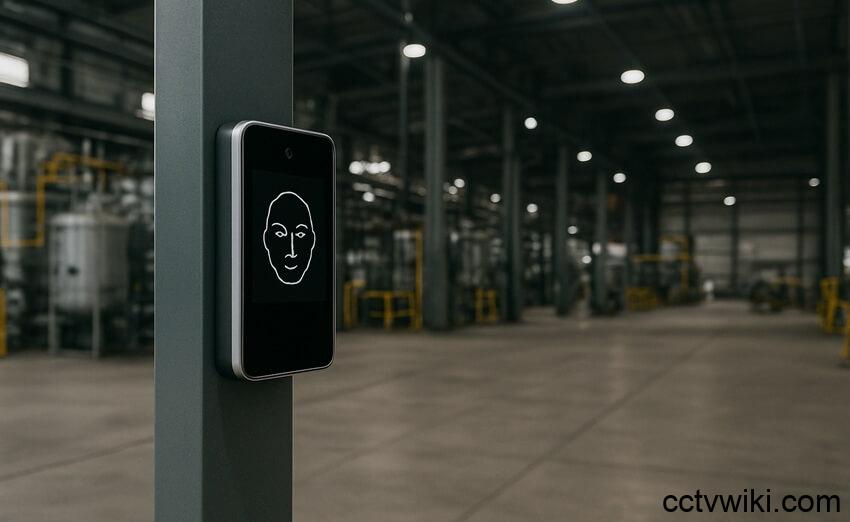Fortifying Factories: Access Control Solutions for Industrial Sites
Access control is non-negotiable for industrial sites. Today’s solutions, ranging from advanced readers to mobile credentials, are more than capable of safeguarding personnel and valuable assets. This article will delve into the access control solutions best suited for these demanding environments.
As highlighted in a previous article, industrial sites are hubs of skilled labor and high-value resources, both requiring robust protection. Access control systems rise to this challenge effectively.
“Access control systems are pivotal in several ways at industrial sites. They secure machinery and resources by restricting entry to authorized personnel, significantly reducing theft and misuse. In terms of safety, only qualified individuals can access hazardous areas, boosting compliance and minimizing accidents. Modern systems also maintain detailed logs and audit trails, demonstrating adherence to regulations and simplifying inspections,” explains Justin Wilmas, EVP of Sales at Acre Security.
Access Control Solutions Tailored for Industrial Needs
With access control’s importance established, what specific solutions are ideal for industrial sites? Let’s take a closer look.
Readers
Given the harsh conditions typical of industrial environments, access control hardware, like readers, must be durable and ruggedized.
“Readers should be built to withstand industrial environments. HID recommends devices rated at least IP65 for dust and water resistance, and IK10 for impact resistance,” advises Prabhuraj Patil, Senior Director for Physical Access Control Solutions, ASEAN and India Subcontinent, at HID.
“Our AI-powered facial authentication device, BioEntry W3, can endure prolonged use and harsh conditions without compromising integrity or functionality,” says Hanchul Kim, CEO of Suprema. “Suprema’s 20-plus years of biometric expertise translates into hardware that performs flawlessly in temperatures from -20°C to +60°C, resisting chemical exposure and electromagnetic interference common in industrial settings.”
Credentials
Credentials for industrial sites include traditional cards and biometrics, but mobile credentials are gaining traction due to their inherent advantages. “Credentials are evolving beyond cards toward mobile credentials, blending convenience with robust security, a perfect fit for fast-paced operational environments. Cards can be misplaced, but phones are rarely left behind. Mobile credentials keep security in step with operations,” notes Wilmas.
Combining these credentials to create multi-factor authentication can significantly enhance security. “The future lies in multi-modal authentication. While biometrics offer the highest security level, our platform supports the broadest credential ecosystem – from traditional RFID to cutting-edge mobile credentials. This flexibility ensures seamless migration as organizations evolve their security posture,” adds Kim.
Biometrics
When incorporating biometrics, touchless solutions are optimal. “Touchless biometrics are preferred in industrial settings, enhancing hygiene and minimizing downtime caused by tough working conditions,” Patil points out.
“In environments where workers wear safety gear like gloves, masks, or helmets, touchless facial authentication is the most reliable option. Suprema’s AI-powered facial authentication solution, BioStation 3, delivers high performance across a wide range of faces, even when users are wearing masks, glasses, and hats. This isn’t just a convenience; it’s a mission-critical functionality for industrial operations,” Kim elaborates.
A Word on Cybersecurity
Industrial sites rely heavily on connected devices, including access control solutions, which can be vulnerable to cyberattacks. Cyber threats to the manufacturing sector have surged – from approximately 8 percent of global cyberattacks in 2019 to 25 percent in 2023. Consequently, cyber-secure access control solutions are more vital than ever.
“End-to-end encryption, mutual authentication, secure key management, and compliance with global standards (such as FIDO or NIST) are fundamental to protecting industrial access systems from cyber threats,” Patil emphasizes.
“Cybersecurity is not optional; it’s business insurance. Suprema’s software and hardware devices are designed and developed in compliance with ISO/IEC 27001, ISO/IEC 27701, and GDPR. Our end-to-end encryption, modular security architecture, and world-first CE RED cybersecurity certification demonstrate our commitment to protecting critical infrastructure,” Kim concludes.

